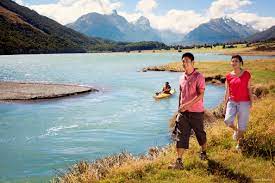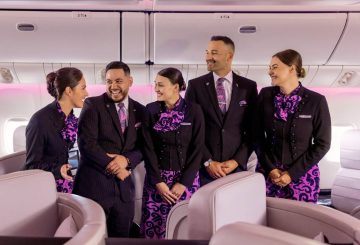Một thành viên của phi hành đoàn Air New Zealand đã sử dụng Ngôn ngữ ký hiệu New Zealand (NZSL) để đưa ra thông báo cho hành khách trên chuyến bay từ Auckland đến Wellington. Đây là lần đầu tiên trên thế giới và được thực hiện như một phần của Tuần lễ NZSL. Phi hành đoàn khuyến khích hành khách thử NZSL bằng cách sử dụng thẻ minh họa cho các vật dụng phổ biến như “nước”, “bánh quy” và “lolly”. Tất cả năm thành viên phi hành đoàn đều có ít nhất một sự hiểu biết cơ bản về ngôn ngữ.
Jon Tai-Rakena, đại sứ Tuần lễ NZSL và là một trong những hành khách, cho biết đây là một bước quan trọng hướng tới sự hòa nhập tốt hơn cho cộng đồng Người Điếc. Ông cho biết đi du lịch như một người Điếc đôi khi có thể cảm thấy cô lập, nhưng chuyến bay này khiến người Điếc cảm thấy được nhìn thấy và chào đón. Ông hy vọng sẽ thấy nhiều NZSL được sử dụng hơn trong tương lai.
Lachlan Keating, giám đốc điều hành của Deaf Aotearoa, người cũng có mặt trên chuyến bay, cho biết thật tuyệt khi thấy nhiều phi hành đoàn và hành khách của Air New Zealand sử dụng NZSL. Ông cho biết càng nhiều người sử dụng NZSL trong cuộc sống hàng ngày của họ, xã hội càng trở nên hòa nhập hơn đối với cộng đồng Người Điếc.
Ngôn ngữ ký hiệu là ngôn ngữ chính thức của New Zealand. Phát ngôn viên hãng hàng không Ed Collett cho biết họ đã làm việc với Deaf Aotearoa để dạy cho nhân viên về 30 dấu hiệu liên quan đến du lịch. Khoảng 400 nhân viên của Air New Zealand đã hoàn thành khóa đào tạo. Hành khách có thể xác định những nhân viên này bằng một chiếc ghim cài ve áo NZSL Supporter đặc biệt mà họ đeo. Tuần lễ ngôn ngữ ký hiệu New Zealand tiếp tục đến ngày 12 tháng 5.




























































